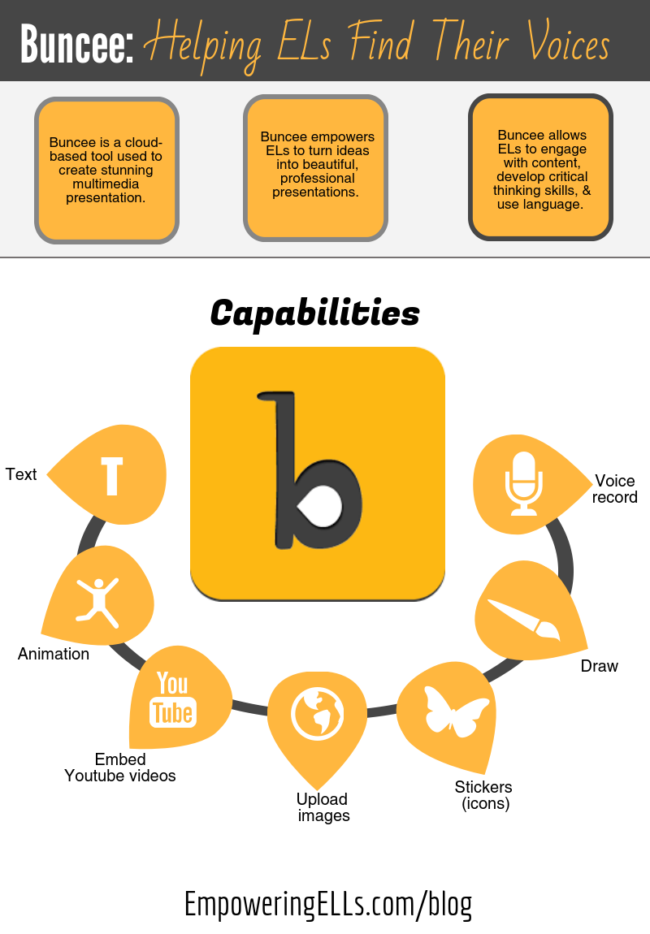Part 8 of the Transforming Instruction Through Technology series, this article explains how to use Buncee, a cloud-based graphics program, to help ELs’ engage with content, cultivate critical thinking, and use language for authentic purposes.
I was first introduced to Buncee when encountering a proverbial brick wall. We had reached the extended writing phase of our Ancient Civilizations unit, an interdisciplinary unit between English and history class. Students needed to write an argumentative essay that evaluated how the social systems of Athens (schooling, laws, domestic responsibilities) favored Athenian men over women.
My plan was to teach the argumentative text structure to help my 6th graders write persuasively. However, there was an EL whom I really didn’t know how to reach.
When Ryan enrolled at my school, it was his first English-only school. Though polite and compliant, he produced no English words in writing or in speech. He was a perfect storm: selectively mute with an entering-level of English, compounded with socio-emotional issues.
Encouraged by Bret Gosselin’s success with integrating Buncee into his classroom, I decided to differentiate instruction for Ryan. He needed to engage in the same level of thinking – evaluation,and description – but he’d do it with the aid of technology. So I allowed Ryan to communicate his ideas with images and limited text (if any)… and crossed my fingers.
What is Buncee?
Buncee is a cloud-based graphics design app that transforms ideas into beautiful presentations. Students can create on laptops or tablet computers.
Buncee offers many options to:
- Add text
- Insert animation
- Link to Youtube and Vimeo videos
- Upload personal images or web-based images
- Add lists, stickers, drawing, and messages all.
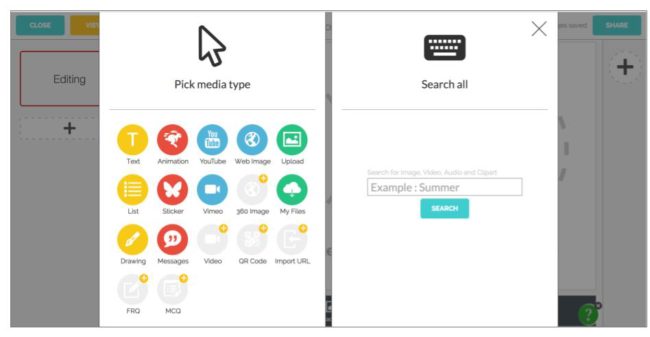
Source: Buncee.com
My students LOVE the sticker function because the stickers are beautiful, whimsical, and creative. There are even animated stickers that act like GIFs, which I haven’t seen in any other presentation-creation apps. All students have to do is search for an item using categories or type in a word and relevant stickers pop up.
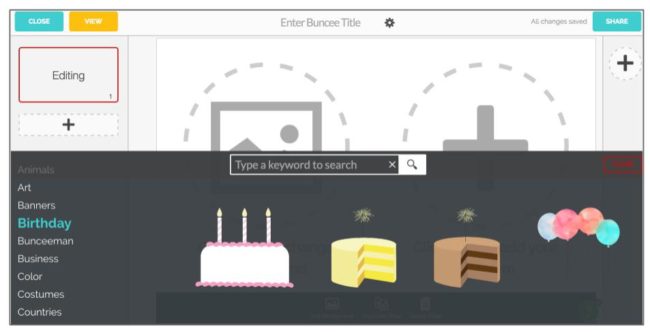
Source: Buncee.com
Ryan’s Buncee
I helped Ryan create his Buncee account, explained the differentiated task, and set him to explore the program. I then went to work with the other ELs. After my mini-lesson, I came back to check up on Ryan’s progress.
It seemed like he had found his away around Buncee. He considered all the functionalities, searched within the categories for appropriate images and decided that drawing would be the best option.
Because Ryan had no text on his Buncee at the time I checked in, I didn’t know what he was attempting to produce. All I saw were heads and faces. I even tried to encourage him to look at the stickers. He responded with his usual frown – indicating “no”. I backed off the recommendation and let him work as I floated around the room to confer with different students.
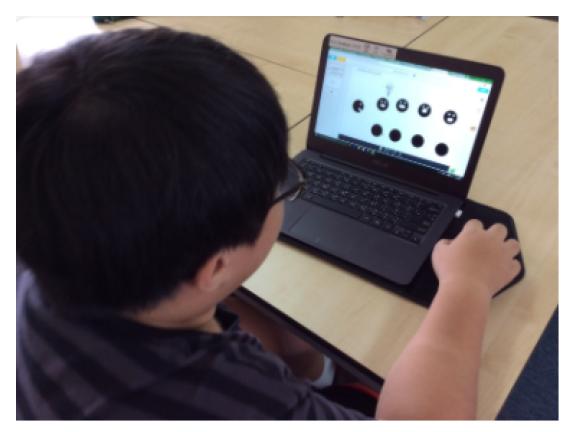
There were five minutes left in class, so I visited Ryan again to monitor his progress. To my surprise, there was a line of text. It was the most writing I’ve ever seen him produce without the aid of a translator.
Now the picture made sense. He was trying to communicate a scene that described how men in Athens spent their time. This was Ryan’s first slide of many to demonstrate his understanding of ancient Greek civilization.
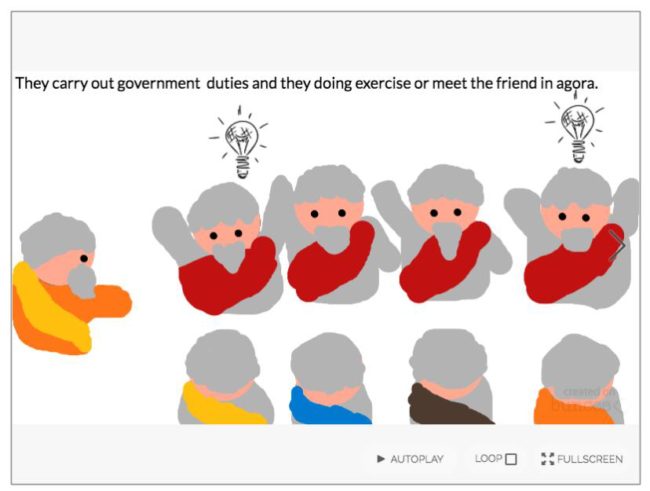
Though simple, crude, and somewhat cute, Ryan’s first Buncee canvas demonstrated that he:
- understood the text we were reading in class about ancient Athens,
- comprehended the task, and
- was thinking critically with an artistic, creative mind.
Benefits of Buncee
Buncee provided 3 main benefits to Ryan:
- increased his engagement with content,
- fostered his critical thinking skills, and
- encouraged his language production
Ryan had to comprehend the ideas in the class text about ancient Athens. When he didn’t, he had to use strategies to help construct meaning. Once Ryan understood the ideas, he had to evaluate which ideas would be most appropriate for the Buncee and synthesize these ideas visually. Finally, though the text he used consisted of only a few words, they were the only written texts he produced on his own thus far. This was a tremendous achievement for him.
But the greatest benefit wasn’t in Buncee’s functionality. Buncee buoyed Ryan’s confidence. It provided him with a digital platform where he could find his voice in pictures and demonstrate that he was a capable student who just needed some differentiation.
Ryan has since moved on from writing with Buncee in English class to producing extended texts with various complicated ideas. However, this would not have been possible without the confidence that working with Buncee instilled in Ryan first.
Our first priority when teaching ELs is not to develop their English, but to develop their confidence.
Takeaways
Nathan Lang tweeted that, “If you’re willing to teach in ways that others won’t, you will have engagement that others don’t” (2017). Before the Buncee project, Ryan had gone through the traditional writing process for a month but was unsuccessful at producing anything, or rather, I wasn’t successful at differentiating writing instruction for him.
I was holding onto an old-school mindset that writing is about producing texts and writing with the aid of graphics would dilute its rigor. Once I abandoned this traditional approach to writing, I saw a whole new level of engagement in Ryan.
Integrating tech is an intentional act of teaching, not a fad.
In their book entitled ELL Frontiers: Using Technology to Enhance Instruction for English Learners, Parris, Estrada, and Honigsfeld suggest that we first start with sound pedagogy, then add technology where it’s needed. In purchasing through this affiliate link, you also support this blog.
In Ryan’s case, he needed Buncee as a form of differentiation. Buncee helped Ryan find his voice, and, coincidentally, it helped a teacher find a new way to support ELs.
Nate Lang, Ed.D. [nalang1]. (2017, Apr 10). If you’re willing to teach in ways that others won’t, you will have engagement that others don’t. #education… https://t.co/xKL4MiDBOB [Tweet]. Retrieved from https://twitter.com/nalang1/status/851223279012642817
Parris, H., Estrada, L., & Honigsfeld, A. M. (2016). ELL frontiers: Using technology to enhance instruction for English learners. Thousand Oaks, CA: Corwin.

